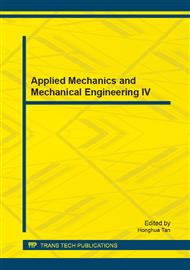p.485
p.488
p.494
p.499
p.505
p.511
p.519
p.524
p.530
Chaotic Motions of a Damped and Driven Morse Oscillator
Abstract:
With the Melnikov method and numerical methods, this paper investigate the chaotic motions of a damped and driven morse oscillator. The critical curves separating the chaotic and non-chaotic regions are obtained, which demonstrate that when the Morse spectroscopic term is fixed, for the case of large values of the period of the excitation, the critical value for chaotic motions decreases as the dissociation energy increases; while for the case of small values of the period of the excitation, the critical value for chaotic motions increases as the dissociation energy increases. It is also shown that when the dissociation energy is fixed, the critical value for chaotic motions always increase as the dissociation energy increases for any value of the period of the excitation. Some new dynamical phenomena are presented for this model. Numerical results verify the analytical ones.
Info:
Periodical:
Pages:
505-510
Citation:
Online since:
October 2013
Authors:
Keywords:
Price:
Сopyright:
© 2014 Trans Tech Publications Ltd. All Rights Reserved
Share:
Citation:


